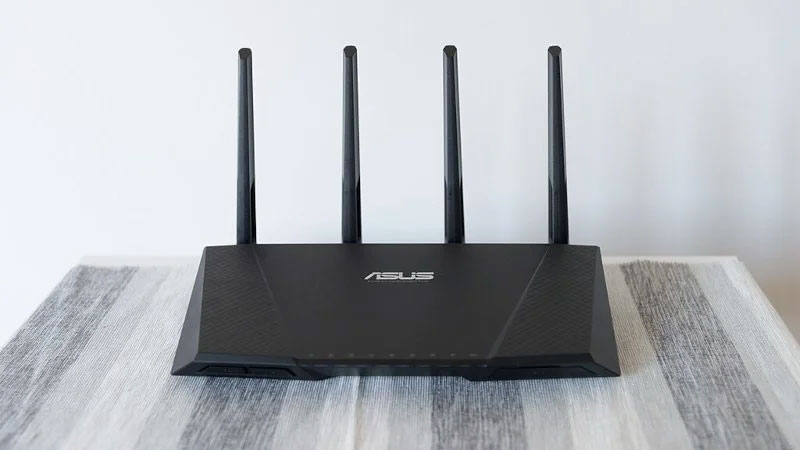Why are some Internet service providers slow to adopt IPv6?
Since 1998, the Internet Engineering Task Force (IETF) has developed methods to overcome some of the limitations of current IP infrastructure. Known as IPv6 (Internet Protocol version 6), this approach overcomes some of the problems plaguing IPv4 and expands the address space to accommodate the multitude of new devices now connecting. with the Internet. However, there are still many ISPs that do not fully deploy IPv6 or only do a partial job. Why is that?
Why is IPv6 important?
IPv4 allows for the allocation of just over 4 billion addresses worldwide. Each address has 4 numbers, each ranging from 0 to 255. This forms a group of 4 bytes with the value of each byte separated by a period in standard notation (e.g. 116.184.122.205).
There are more than 8 billion people on the planet and most own more than one device that occupies a public IP address. Not to mention how many companies own large amounts of IPv4 addresses called IP ranges. Over time, IP addresses begin to dry up.

These sites are controlled by regional Internet registries (RIRs), each responsible for a region of the world. Reports have emerged that some RIRs are running out of IP addresses and are allocating the last addresses they are allowed.
In 2011, the Asia Pacific Network Information Center (NIC) was the first to announce that it had allocated the last possible address from its pool. This was followed by the November 2019 announcement by Réseaux IP Européens (RIPE) that all IPv4 addresses in Europe had been completely exhausted.
To combat this, RIR has advocated for rapid adoption of IPv6, which will significantly increase address space. Although they look much more complicated (e.g. fe80::f24e:bb6e:2876:c2dc), IPv6 addresses are typically represented as eight groups of 16-bit hexadecimal values.
They are often shortened by removing groups of zeros (0000), but always form a full 128-bit number, allowing for a surprisingly large number of addresses, up to 340,282,366,920,938,463,463,374,607,431 .768.211.456 addresses.
Slow adoption of IPv6 affects the economy
If you have strong reasoning abilities, you might guess that ISPs' failure to quickly adopt IPv6 has a lot to do with cost. If an Internet provider serves millions of users, the cost of widely adopting IPv6 will be extremely expensive.

This is not as simple as issuing a firmware update. ISPs need to replace all legacy equipment that cannot route IPv6 connections with equipment that can use both v6 and v4. Likewise, if providing routers to end customers, the ISP will also need to replace all of those routers. ISPs must also consider whether their customers have the necessary network interface to authenticate using IPv6 addresses.
With over a million customers across different geographies within a country, the cost factor increases significantly. It would cost the ISP a lot of money to replace all the expensive equipment that could use a new set of digital addresses. Therefore, if there are still many unused IPv4 addresses within your network, the ISP can completely delay this process.
Don't forget that all IPv6 routers must still be designed for backward compatibility with the old protocol. IPv4 continues to be widely used by endpoint servers, meaning that ISPs that provide IPv6 addresses to end customers must have a way to bridge them when connecting to these servers. This bridging also leads to many headaches, especially since ISPs using IPv6 often have to provide their customers with an IPv4 endpoint to connect to.
On the other hand, servers that use IPv6 addresses will not be able to communicate with clients that only have IPv4 addresses.
Disadvantages of NAT devices
For a long time, ISPs that refused to adopt IPv6 relied on several layers of NAT (Network Address Translation) devices, including the tendency of their customers to use routers with this technology. NAT converts one network IP to another IP's requests and signals, allowing multiple devices to share one address, while each device still owns a different internal address.

Since the late 90s, this has become an essential part of home and office networks, stemming the tide of IPv4 address exhaustion. However, in practice, this technology had many flaws when applied on a large scale and did not capture much of the mobile traffic coming in the following decades.
The proliferation of LTE and 5G mobile connections in emerging economies has made NAT less relevant. When outside your home WiFi network, your phone will connect to the mobile network and receive a new IP address. If your home router is authenticated with your ISP and you live alone, you are currently occupying two IP addresses. Each family member who owns a phone will also have an additional IP address as soon as they leave the range of the home WiFi network.
This has led to a nationwide exhaustion of IP addresses in many countries. For example, Romania, Argentina, Türkiye, Poland, Mexico, Russia and Brazil have experienced rapid IP address exhaustion, with address space only half or insufficient to supply the entire population. population department. With the explosion in connectivity and growing mobile traffic, these countries are forced to quickly upgrade their infrastructure to ensure connectivity via IPv6 when other addresses are not available. use.
With all this in mind, it's no surprise that IPv6 adoption has increased steadily over the years.
Is there a need to worry about the slow adoption of IPv6?
Just because ISPs are slow to adopt IPv6 doesn't mean they aren't closely monitoring the situation. It is in their interest to ensure the best possible connection for their customers, especially if they are competing with a number of other providers. Don't forget that recent adoption comes from competing pressures to maintain connectivity due to local IPv4 exhaustion.
As mentioned before, although progress is slow, the situation worldwide is still quite good. In 2015, Google estimated that only over 5% of Internet traffic came from IPv6 clients, but by 2024, this number will account for nearly half of all traffic!
 Users can only use a maximum of about 40% of the package's network speed
Users can only use a maximum of about 40% of the package's network speed How to fix laptop error not connecting to WiFi, fix laptop error not receiving WiFi
How to fix laptop error not connecting to WiFi, fix laptop error not receiving WiFi Some ways to improve Wi-Fi connection and speed up WiFi
Some ways to improve Wi-Fi connection and speed up WiFi What is 1.1.1.1? How does it speed up the Internet and secure data when browsing?
What is 1.1.1.1? How does it speed up the Internet and secure data when browsing? How to create WiFi Hotspot in Ubuntu
How to create WiFi Hotspot in Ubuntu How to turn an old router into a wireless bridge
How to turn an old router into a wireless bridge